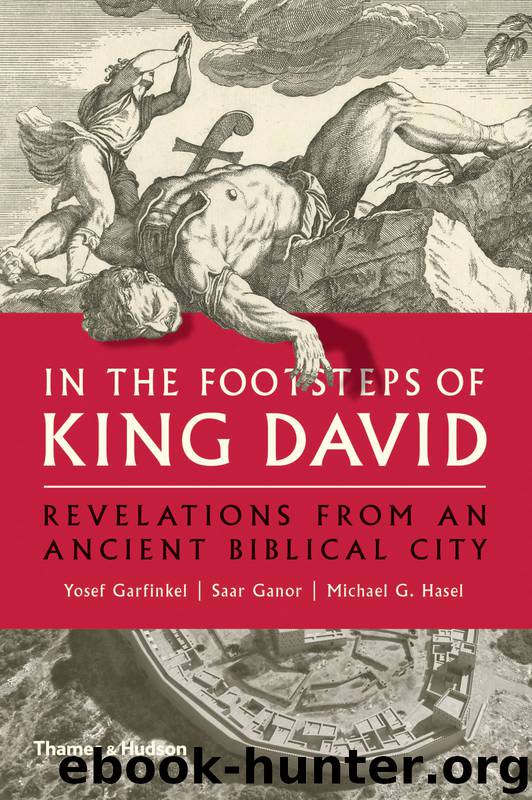In the Footsteps of King David by Yosef Garfinkel

Author:Yosef Garfinkel
Language: eng
Format: epub
Publisher: Thames & Hudson
Published: 2018-07-25T16:00:00+00:00
6
CULT IN JUDAH PRIOR TO THE CONSTRUCTION OF SOLOMON’S TEMPLE
The discoveries at Khirbet Qeiyafa make a major contribution to the investigation of ancient cult during the First Temple period in the region of Judah. According to the Bible, two unique religious concepts developed here and at this time: the belief in one God, that is, a monotheistic cult; and a cult that was aniconic, that is, one that rejects images in accordance with the commandment “Thou shalt not make unto thee any graven image” (Exodus 20:4). These two features set cultic practice in this region entirely apart from the worship of idols that was found in all the lands of the ancient Near East. However, while the biblical tradition describes these concepts as being adhered to by the people of Israel from early on, the same tradition also informs us that the reality was far more complex. Most of the population of the Kingdom of Israel, including the ruling elite, did not follow a monotheistic cult, but also worshipped Baal and Asherah “on every high hill and under every green tree” (1 Kings 14:23).
In Judah, too, we hear of conflicts between two different religious practices. Thus, for example, it is said that during the days of King Josiah, at the end of the 7th century BCE, the Asherah was removed from the temple in Jerusalem and burned in the Kidron Valley (2 Kings 23:6). From this we learn that at some point a statue or other representation of Asherah must have stood in the temple in Jerusalem. Elsewhere, we hear that King Hezekiah destroyed the copper snake that Moses had made in the desert (2 Kings 18:4). In other words, the image of a snake believed to belong to the days of Moses stood in Jerusalem and was attributed with medicinal and redemptive powers. Various prophets of biblical times repeatedly warned against the practice of the worship of idols that had spread among the people. Idol worship is also reflected in archaeological remains. In excavations conducted in Jerusalem over 1,000 clay figurines portraying a naked woman holding her breasts were found in strata dating to the end of the First Temple period.1 Some identify these with the Asherah referred to in the Bible. Such figurines are also found at many sites in Judah and are particularly widespread at the end of the First Temple period.
To understand the significance of the discoveries at Khirbet Qeiyafa, we should first look at the information available for ancient cult in the preceding period, Iron Age I (12th–11th century BCE). Several cult places are known from this period. At Hazor a standing stone and a bronze figurine of a god were discovered by Yigael Yadin, and another cult area was excavated by Amnon Ben-Tor. In the Samaria region, Amihai Mazar excavated a site on a hilltop where a bronze figurine of a bull was found—the so-called “Bull Site.” On Mount Ebal an accumulation of animal bones was examined by Adam Zertal, attesting to cult activity, and at Tel Qiri in the Jezreel Valley a cult room was excavated by Amnon Ben-Tor.
Download
This site does not store any files on its server. We only index and link to content provided by other sites. Please contact the content providers to delete copyright contents if any and email us, we'll remove relevant links or contents immediately.
The Five People You Meet in Heaven by Mitch Albom(3336)
Real Sex by Lauren F. Winner(2867)
Name Book, The: Over 10,000 Names--Their Meanings, Origins, and Spiritual Significance by Astoria Dorothy(2840)
The Holy Spirit by Billy Graham(2777)
The Secret Power of Speaking God's Word by Joyce Meyer(2754)
ESV Study Bible by Crossway(2671)
How The Mind Works by Steven Pinker(2612)
0041152001443424520 .pdf by Unknown(2599)
Ancient Worlds by Michael Scott(2494)
The ESV Study Bible by Crossway Bibles(2419)
The Gnostic Gospels by Pagels Elaine(2399)
The Meaning of the Library by unknow(2386)
Churchill by Paul Johnson(2368)
MOSES THE EGYPTIAN by Jan Assmann(2276)
City of Stairs by Robert Jackson Bennett(2233)
Jesus by Paul Johnson(2229)
The Complete Dead Sea Scrolls in English (7th Edition) (Penguin Classics) by Geza Vermes(2136)
Ancient Near Eastern Thought and the Old Testament by John H. Walton(2131)
The Nativity by Geza Vermes(2115)
